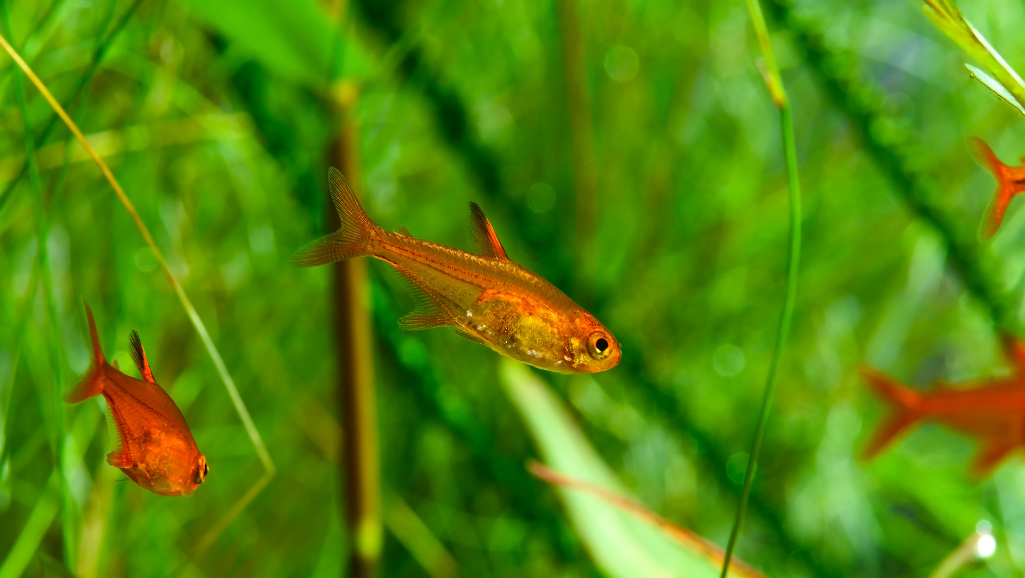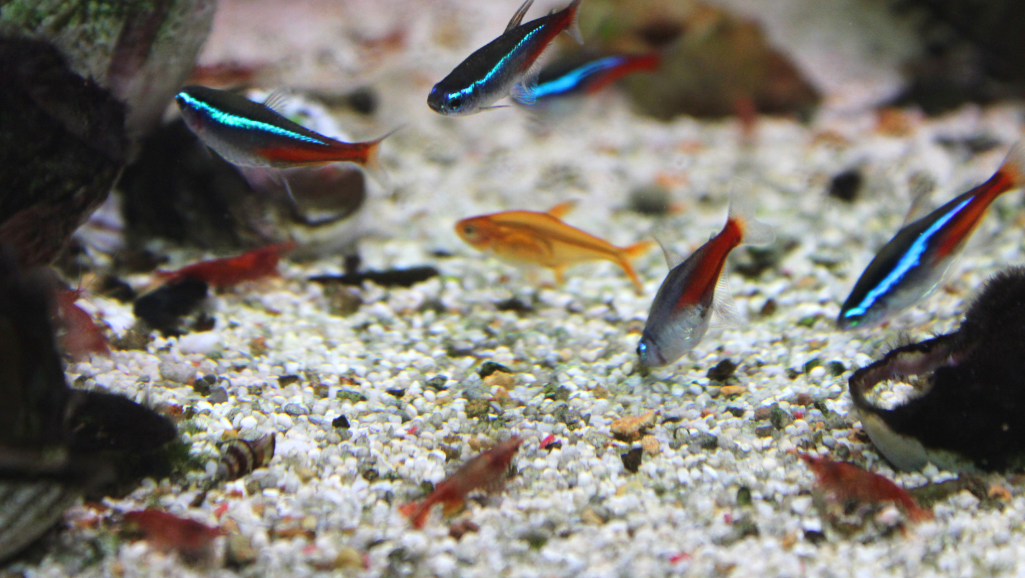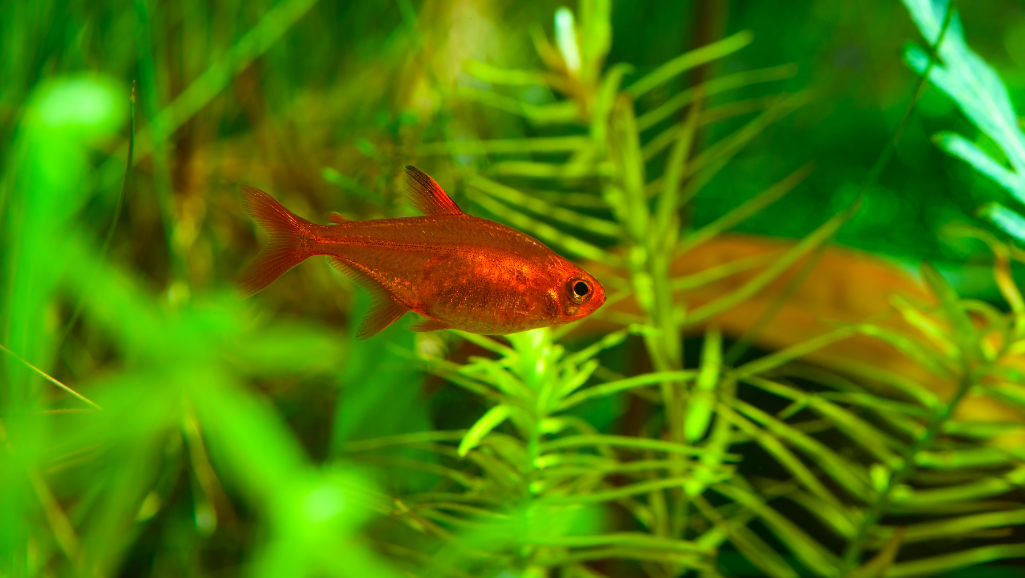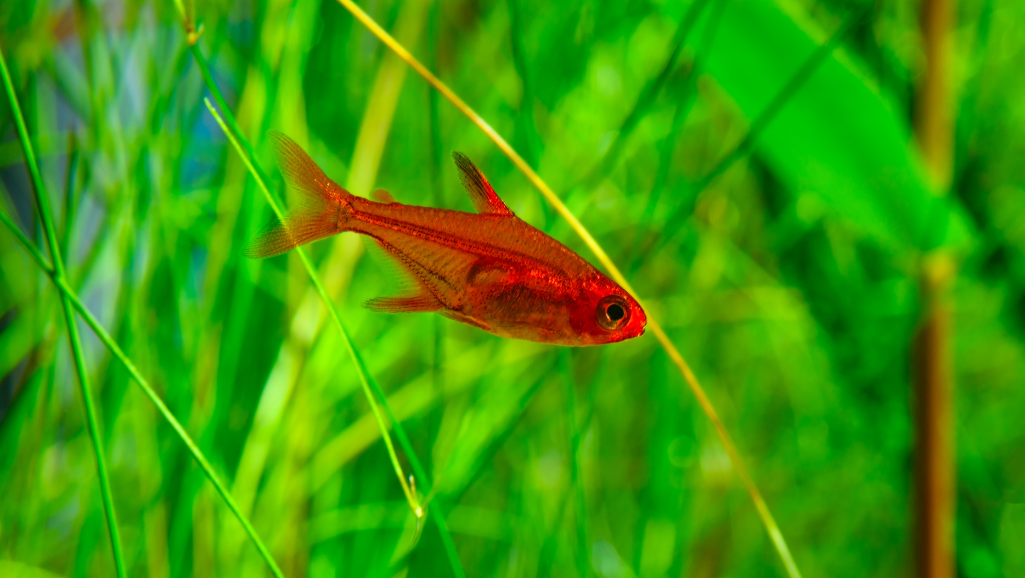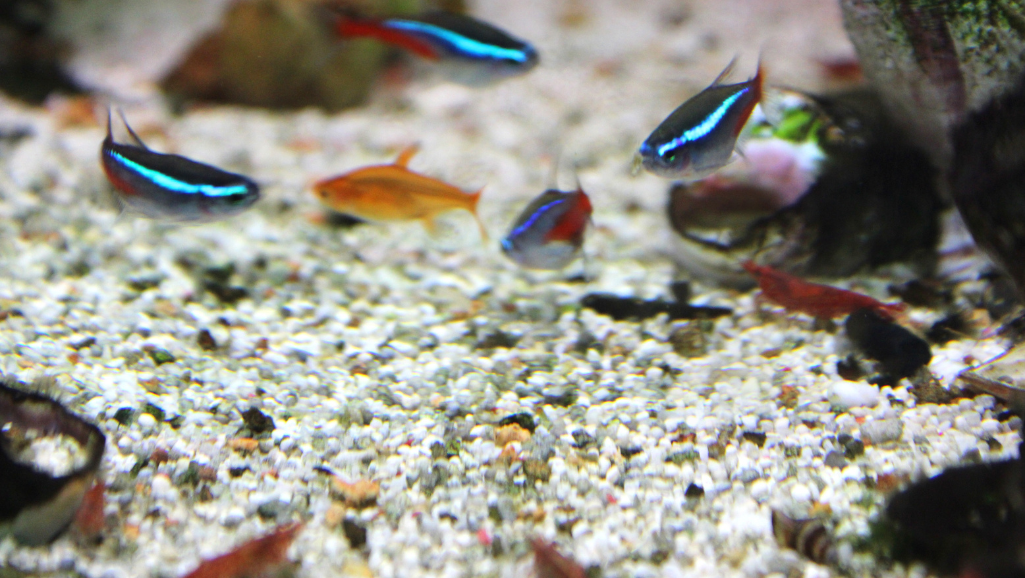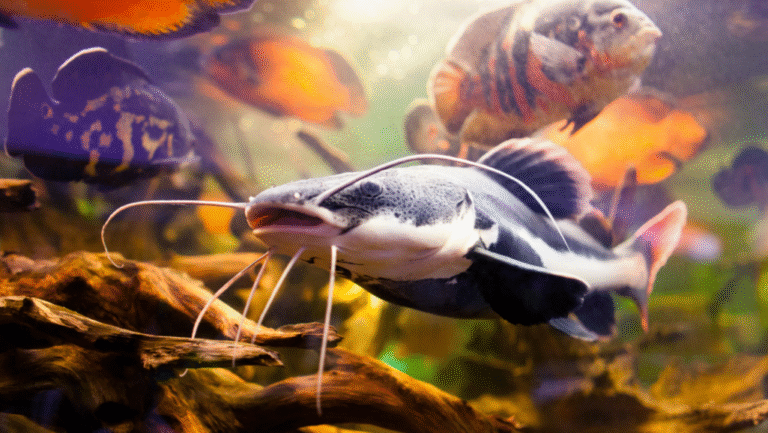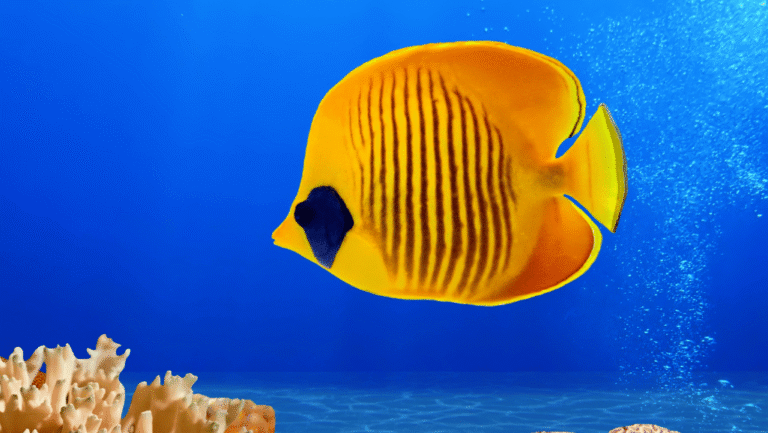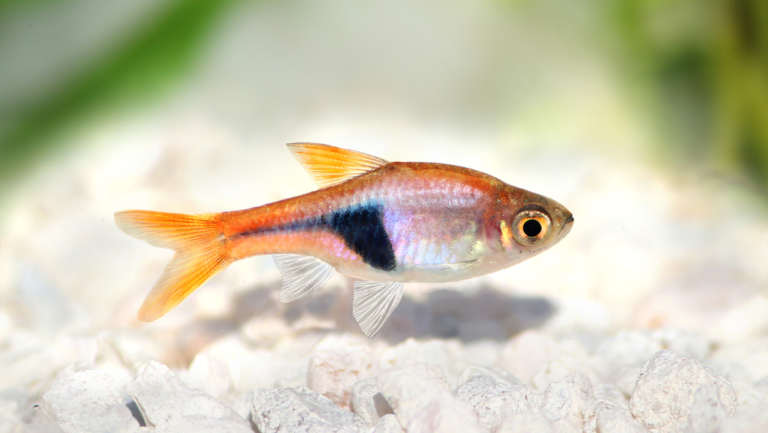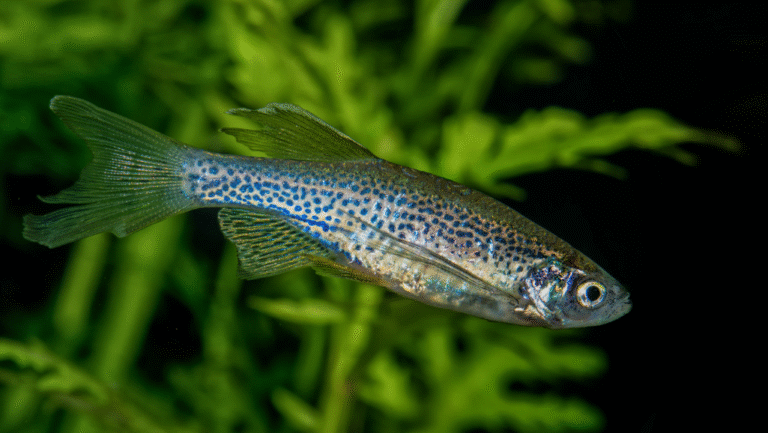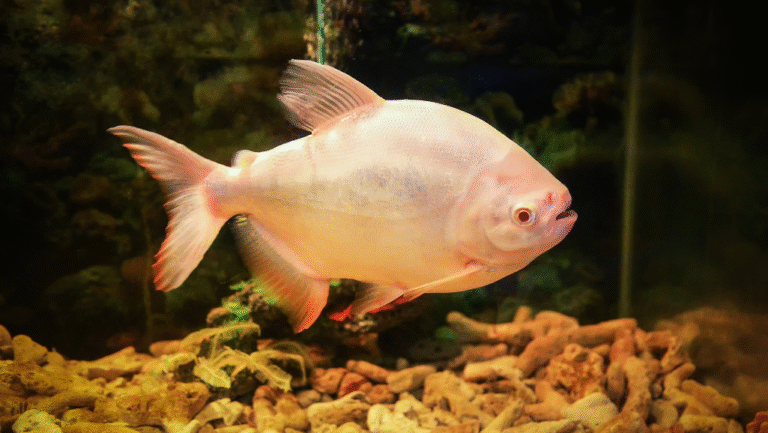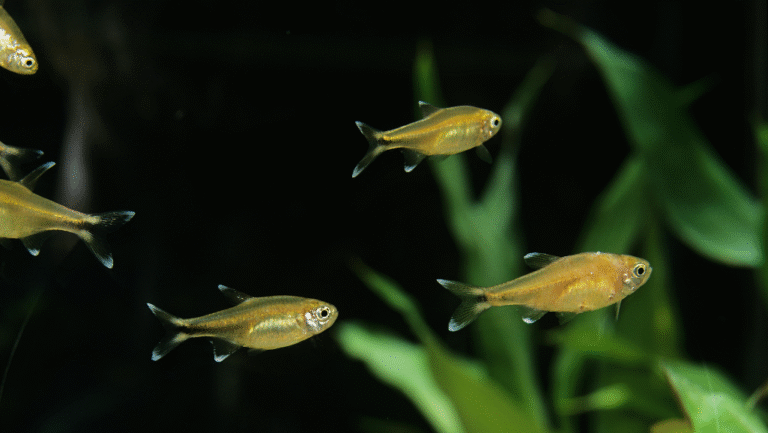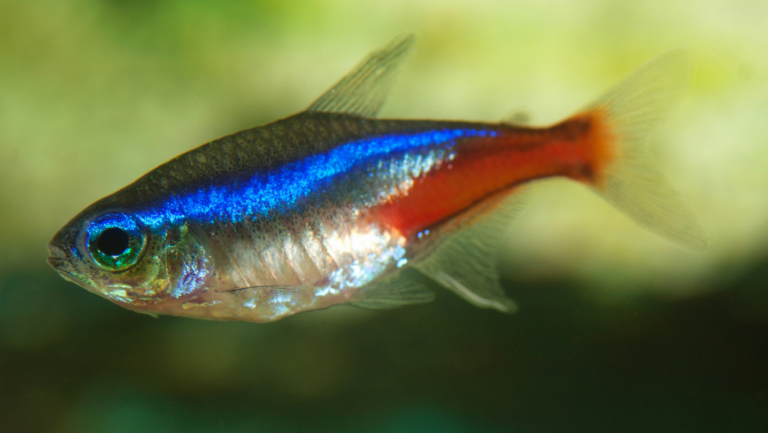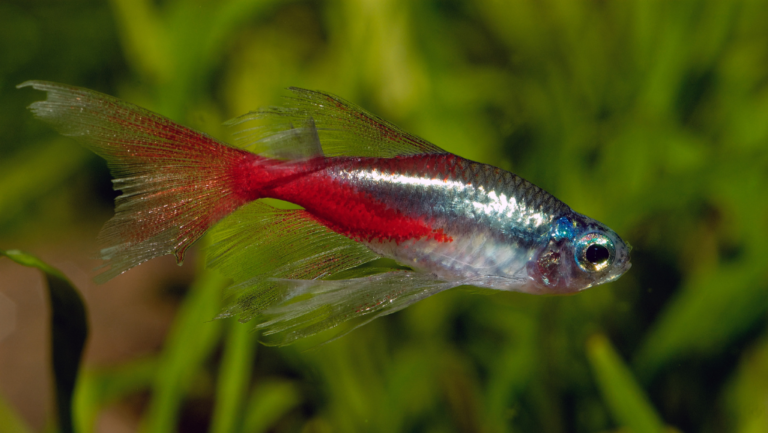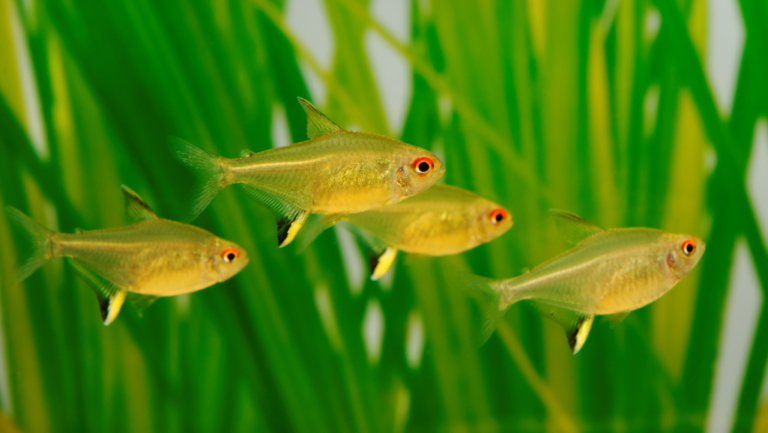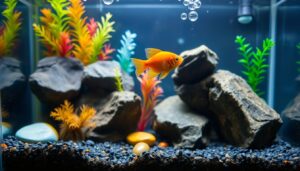Ember Tetras, known as Hyphessobrycon amandae, are a vibrant addition to freshwater fishkeeping. They come from the Araguaia River basin in Brazil. Their striking red-orange color makes them a beautiful addition to nano tanks and aquariums.
They are small, rarely over 0.8 inches (2 cm), and love to be in schools. A minimum 5-gallon habitat is best for them. Keeping them in schools of 6-10 or more makes them more vibrant and confident.
Key Takeaways
- Optimal tank setup includes a dark substrate and live plants for Ember Tetras to thrive.
- Keeping Ember Tetras in proper school sizes encourages natural behavior and vibrant colors.
- Consider the water quality parameters critical for the health of Ember Tetras, including temperature and pH.
- Ember Tetras benefit from a varied diet, mimicking their natural omnivorous tendencies.
- Creating a naturalistic environment with driftwood and leaf litter can enhance Ember Tetras’ wellbeing.
- The intricacies of breeding Ember Tetras are eased with mature tanks and suitable plant cover.
Understanding Ember Tetra Characteristics
The Ember Tetra is a bright and small fish that catches the eye in the aquarium hobby. Knowing their traits is key to creating a good home for them. This ensures they show off their colors and act naturally.
Physical Appearance and Size
Ember Tetras have a beautiful red-orange color that can look coppery near their belly. They are small, about 0.8 inch (2 cm) long, but look strong. During breeding, females get rounder bellies, adding to their charm.
They fit well in small tanks, making them popular among both new and seasoned fish keepers.
Behavior and Social Needs
Ember Tetras love to be in groups and are peaceful and lively. They do best with other Ember Tetras but can also live with calm fish. Unlike some small fish, Ember Tetras are bold and fun to watch.
To meet their social needs, it’s best to keep them in groups of at least six. This boosts their confidence and happiness in the aquarium ecosystem.
Knowing the physical and behavioral traits of Ember Tetras is very important, even for breeding. A setup that mimics their natural home encourages them to breed. This not only keeps them healthy but also helps with breeding in the aquarium hobby.
Whether you’re experienced or new to fishkeeping, understanding Ember Tetras can make your hobby rewarding and fulfilling.
Ideal Tank Setup for Ember Tetras
To create the perfect home for Ember Tetras, you need to know their natural habitat and likes. Start by picking the right tank size, water conditions, and decorations that remind them of their South American home.
Tank Size and Dimensions
Begin with a 5-gallon tank for a small group of Ember Tetras. But, a 20-gallon tank or bigger is best for a stunning display. They love to be in groups of at least 6-10, and more is even better for their natural behavior.
- Tank recommendations: 5 gallons for beginners, or 20+ gallons for enthusiasts
- Grouping: At least 6-10, but 20-25 for a fuller, more vibrant display
Substrate and Decoration Choices
Choosing the right substrate and decorations makes your tank look great and keeps Ember Tetras healthy. Use a dark substrate like fine gravel or sand to show off their bright orange colors. This also reminds them of their natural riverbeds.
- Substrate: Dark fine gravel or sand to enhance the natural coloration of Ember Tetras
- Decorations: Driftwood and leaf litter like catappa leaves to mimic their natural habitat and provide hiding spots
Adding live plants to your tank is a big plus for Ember Tetras. Plants give them places to hide and help keep the water clean and full of oxygen. Try using Amazon swords and hornwort, or make a lush planted tank like the Araguaia River basin.
- Plants: Amazon swords, hornwort, and other dense foliage to replicate natural living conditions
- Benefits: Aids in water filtration, provides oxygen, and creates hiding spaces
When picking Ember Tetra tank mates, choose peaceful fish that like the same Ember Tetra water parameters. Small rasboras, freshwater snails, and other gentle tetras make a calm and friendly aquarium.
- Compatible tank mates: Rasboras, pencilfish, other small tetras, and freshwater snails
Keeping the right Ember Tetra water parameters is key for their health. They like a temperature of 72–82°F and a pH of 5.5–7.5. Regular checks and adjustments help them live well in a stable home.
- Water temperature: 72–82°F
- pH level: 5.5–7.5
- Water hardness: Soft to moderately hard
Water Parameters for Ember Tetras
Keeping the water right is key for Ember Tetras’ health. These small fish add color and show if the water is good. To keep them happy, you need to know about their temperature, diet, and water quality.
Temperature and pH Levels
The best Ember Tetra temperature is between 72°F and 84°F. This keeps them stress-free and healthy. Their water should be slightly acidic to neutral, from 5.5 to 7.5 pH.
Changing the pH should be done slowly. This keeps the water stable. For more on this, check out their natural habitat.
Hardness and Filtration Requirements
Ember Tetras do well in soft to moderately hard water. The hardness should be between 4 to 8 dKH. To keep the water quality good, change it slowly and carefully.
Use gentle filters like sponge filters or air stones. They help keep the water clean and stable. This is good for your Ember Tetras’ health and color.
By following these guidelines, your Ember Tetras will live longer and look their best. Your aquarium will become a vibrant and lively place.
Feeding and Nutrition for Ember Tetras
Proper fish nutrition is key for Ember Tetras’ health and color. This section will help you understand their diet and feeding tips. It’s all about improving your aquarium care.
Best Foods for Ember Tetras
The Ember Tetra diet includes small, sinking foods. These are easy for them to eat because of their small mouths. For a balanced diet, feed a mix of:
- Nano pellets – Made for smaller fish.
- Crushed flakes – High-quality flakes are rich in nutrients.
- Baby brine shrimp – Great for protein and taste.
- Freeze-dried daphnia, cyclops, and rotifers – Adds variety and nutrients.
Feeding different foods mimics their natural diet. It keeps them healthy and colorful.
Feeding Schedule and Tips
Feed Ember Tetras small meals often. This is like their natural foraging. Here are tips for their feeding schedule and fish nutrition:
- Feed small amounts two to three times daily.
- Only give as much food as they can eat in 3 minutes. This prevents overfeeding and pollution.
- Feeding at the same times helps their digestion and reduces stress.
By following these guidelines, Ember Tetras will get a balanced diet. This is essential for their long, healthy life. Remember, good aquarium care starts with knowing and meeting your fish’s dietary needs.
Common Health Issues and Solutions
Understanding and tackling health problems is key to caring for Ember Tetras. With the right Ember Tetra care tips and aquarium health practices, they can live up to 2 to 4 years. This means your school of fish can thrive and stay vibrant.
Signs of Stress or Illness
Behavioral changes are the first signs of stress or illness in Ember Tetras. Look out for sudden shyness, less activity, or color loss. Watching your fish closely can help you catch these signs early. This way, you can act fast and keep your aquarium healthy.
For more tips on creating a great home for your fish, check out Happy Pet’s Ember Tetra guide.
Preventative Care and Treatment Options
Keeping your aquarium healthy is the best way to prevent illness. This means keeping the water just right for your Ember Tetras. Regular checks on water quality and a steady diet are vital.
If your fish gets sick, isolate it quickly. Accurate diagnosis and the right treatment are critical. AquaJoyLife’s advice can help keep your tank lively and your fish healthy. For more tips, visit AquaJoyLife.
